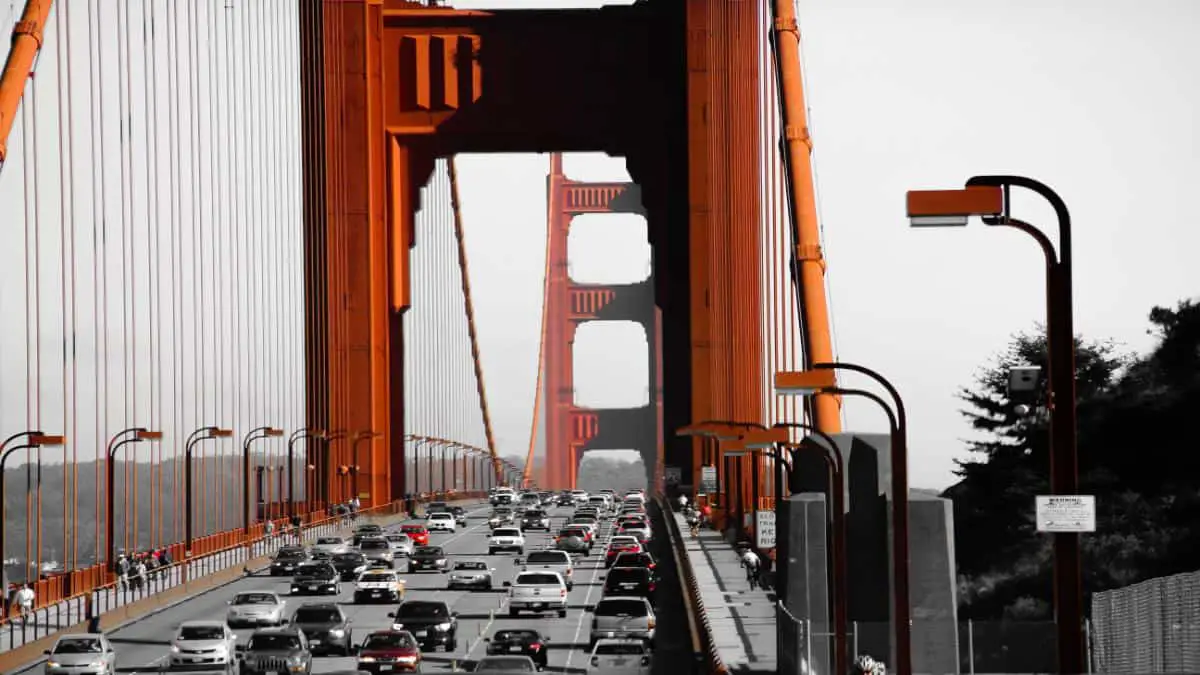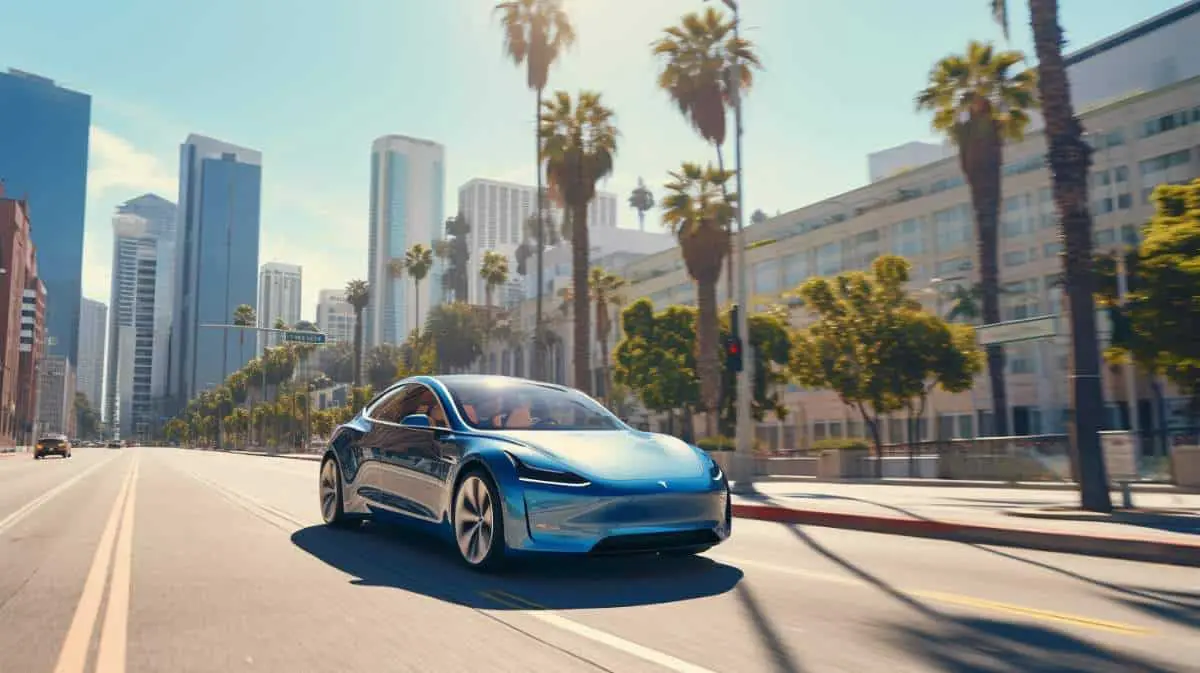In this blog post I will unravel everything about California’s Low Emission Vehicle (LEV) Program, from its criteria pollutant and greenhouse gas regulations of LEV I & II to the introduction of LEV III standards and beyond.
Key Takeaways
- The Low Emission Vehicle (LEV) Program in California consists of three phases: LEV I, LEV II, and the current phase, LEV III.
- LEV I (1994-2003) and LEV II (2004-2015) introduced regulations targeting criteria pollutants such as nitrogen oxides, carbon monoxide, and particulate matter. They also played a crucial role in introducing clean electric vehicles into the mainstream market.
- LEV III (2015-2025) is focused on reducing both criteria pollutant and greenhouse gas emissions from vehicles. It sets more stringent emission guidelines for light-duty trucks, medium-duty vehicles, and passenger cars below 14,000 lbs gross weight.
- The Low Emission Vehicle Program brings numerous benefits including reduced air pollution, lower greenhouse gas emissions, and the promotion of cleaner and more fuel-efficient vehicles.

Overview of California’s Low Emission Vehicle (LEV) Program
California’s Low Emission Vehicle (LEV) Program consists of three phases: LEV I (1994-2003), LEV II (2004-2015), and the current phase, LEV III (2015-2025).
History of LEV I (1994-2003) & LEV II (2004-2015) criteria pollutant regulations
California’s journey towards low emission vehicles began with the implementation of LEV I, followed by the more stringent LEV II standards.
- LEV I regulations, in effect from 1994 to 2003, marked the inaugural step taken by California to regulate vehicle emissions.
- Initially, these standards targeted reducing criteria pollutants including nitrogen oxides (NOx), carbon monoxide (CO), and particulate matter (PM).
- As part of this program, light-duty vehicles were categorized based on their emission levels: Low Emission Vehicles (LEV), Ultra-Low Emission Vehicles (ULEV), and Zero Emission Vehicles (ZEV).
- These categories allowed manufacturers to create a mix of vehicle types to meet fleet-wide average emission requirements.
- The ZEV mandate under LEV I was especially crucial as it introduced clean electric vehicles into the mainstream market.
- In 2004, California further tightened its hold on vehicular pollution by introducing LEV II regulations that continued through 2015.
- Under these revised standards, several new emission categories came into existence such as Super-Ultra-Low Emission Vehicles (SULEV) and Partial Zero Emission Vehicles (PZEV).
- The LEV II program enforced stricter limits on NOx emissions compared to LEV I levels.
- It also introduced evaporative emission controls to limit fuel vapors from seeping into the environment.
- Both criteria pollutants and greenhouse gas emissions were targeted under this program – a first in California’s regulatory history.
LEV III (2015-2025) criteria pollutant and greenhouse gas regulation
The LEV III standards, adopted by the California Air Resources Board in 2012, marked a notable shift in emission regulations. Unlike its predecessors, this program cleverly consolidated criteria pollutant and greenhouse gas emissions into one comprehensive package.
It set out more tightened emission guidelines for light-duty trucks, medium duty vehicles and passenger cars below 14,000 lbs gross weight.
These rigorous standards came into effect from 2015 and will continue to be implemented gradually until 2025. The primary goal of these precise measures is to significantly reduce both the greenhouse gas and criteria pollutant discharge from vehicles within California’s boundaries.
Through implementing stringent norms on exhaust emissions via LEV III regulations, advancements towards cleaner air are steadily taking place all over the state.
LEV III and the “Advanced Clean Cars” program
Stepping into a new era of environmental consciousness, California launched the LEV III standards as part of its “Advanced Clean Cars” program in 2012. This robust regulations package zeroes in on reducing emissions from light and medium-duty vehicles, pushing manufacturers to innovate beyond previous boundaries.
The program puts stringent limits on various pollutants including Non Methane Organic Gas (NMOG), Nitrogen Oxides (NOx), Carbon Monoxide (CO), Hydrocarbons (HCHO), and Particulate Matter (PM) – no easy task for automakers but an essential one for public health.
By setting varying emission standards based on a vehicle’s Gross Vehicle Weight Rating (GVWR), it ensures fairness across the board while still driving progress forward. Fundamentally transformative in nature, this initiative forms a cornerstone of California’s blueprint to combat climate change and reduce reliance on fossil fuels.
The Low Emission Vehicle designation includes full-electric cars, hybrids, and certain gas-powered cars. They are all vehicles that are comparatively cleaner than their standard counterparts.

Technical Standards of The California LEV Program
As explained above, the Low Emission Vehicle (LEV) program in California has implemented a series of technical standards to regulate and reduce emissions from passenger cars, light-duty trucks, and medium-duty vehicles below 14,000 lbs gross weight.
LEV I standards (1994-2003)
During the period of 1994 to 2003, California implemented the first Low Emission Vehicle (LEV I) program.
At this time, the following emission categories were defined:
- Transitional Low Emission Vehicles (TLEV)
- Low Emission Vehicles (LEV)
- Ultra Low Emission Vehicles (ULEV)
- Super Ultra Low Emission Vehicles (SULEV)
- Zero Emission Vehicles (ZEV)
As part of LEV I standards, auto manufacturers were mandated to gradually introduce a higher proportion of cleaner vehicles into their fleets each year. One crucial requirement was that a specific percentage of vehicles had to be zero-emission vehicles (ZEVs), meaning they emitted no exhaust or evaporative emissions.
This marked an important milestone in California’s commitment to addressing environmental concerns by focussing on greenhouse gas emissions, not just smog-forming and other polluting emissions.
LEV II standards (2004-2015)
During the period of 2004 to 2015, California implemented the LEV II standards, composed of Ultra Low Emission Vehicle (ULEV II), Super Ultra Low Emission Vehicle (SULEV), and ZEV standards, also referred to as “bins.
These standards were a significant step forward in reducing vehicle emissions and improving air quality across the state.
Compared to previous regulations, LEV II emission standards were much stricter and required advanced emission control after-treatment technologies for diesel vehicles. Additionally, automakers had to meet fleet emission requirements, which aimed at reducing overall vehicle fleet emission levels.
Changes implemented in ZEV II:
- Re-classification of light-duty truck and medium-duty vehicles below 8,500 lbs gross weight making them subject to passenger car requirements. Phased in by 2007.
- In addition to ULEV, SULEV, and ZEV bins, a fourth PZEV (Partial Zero-Emission Vehicle) bin was created with complies with SULEV, but additionally subject to evaporative emissions control and must have a 150,000 mile or 15 year warranty.
The implementation of LEV II marked an another important milestone in California’s efforts to promote cleaner and more fuel-efficient vehicles while addressing environmental concerns.
LEV III standards (2015-2025)
As part of California’s Low Emission Vehicle (LEV) Program, the LEV III standards were adopted in January 2012 and apply to new passenger vehicles from model years 2015 to 2025. These standards introduce more stringent emission regulations for both criteria pollutants and greenhouse gases (GHG).
LEV III specifies the amount of GHGs emissions allowed for cars, light trucks, and medium-duty passenger vehicles.
The differences between LEV III and LEV II standards are the following:
- NMOG and NOx emissions will be combined into one standard for both “NMOG+NOx“.
- Emission control systems will have more demanding durability requirements.
- Durability requirement updated to 150,000 miles, previously 50,000 to 120,000 under LEV II. Manufacturers receive emission credits for extended warranties.
- For fleets, a more stringent NMOG-NOx average requirement will be applied with the aim of a 70% reduction of these emissions.
- Tightening of the particulate matter standard from 10 mg/mi to 3 mg/mi, phased in from 2017 through 2021.
- Evaporative emissions overhaul – new standards set for “zero-evaporative emissions” as well as more demanding test procedures.
- Direct Ozone Reduction Credit created for manufacturers that implement direct ozone reduction systems.

Benefits of the Low Emission Vehicle Program
The Low Emission Vehicle Program brings numerous benefits, including reduced air pollution, lower greenhouse gas emissions, and the promotion of cleaner and more fuel-efficient vehicles.
Reduction in air pollution and criteria pollutant emissions
Through the implementation of stringent emission standards under LEV III, there has been a significant decrease in both air pollution and criteria pollutant emissions. In fact, by 2025, these regulations aim to achieve a remarkable 70% reduction in overall emissions and an impressive 73% reduction specifically in NMOG+NOx emissions.
This not only improves air quality but also helps combat climate change by reducing greenhouse gas emissions. The commitment to cleaner vehicles through the LEV program has had a positive impact on our environment and public health.
Contribution to greenhouse gas emission reduction
Being an environmentally conscious state, California’s Low Emission Vehicle (LEV) Program has made significant contributions towards reducing greenhouse gas emissions. With the implementation of LEV III standards, which include more stringent regulations for both criteria pollutants and greenhouse gases in new passenger vehicles, the program aims to make a substantial impact on carbon emissions.
Promotion of cleaner and more fuel-efficient vehicles
Through California’s Low Emission Vehicle program, stringent emission standards are set for passenger cars, light-duty trucks, and medium-duty passenger vehicles.
These standards ensure that manufacturers prioritize technologies that reduce harmful pollutants and greenhouse gas emissions.
It also incentivizes innovation within the automotive industry by encouraging manufacturers to invest in research and development of new technologies that increase efficiency while minimizing emissions.
By promoting cleaner and more fuel-efficient vehicles, the program directly contributes to improving air quality, reducing our carbon footprint, and creating a healthier environment for all Californians.
Future of the Low Emission Vehicle Program
The future of the Low Emission Vehicle Program in California beyond the ongoing adoption of LEV III standards, involves the imminent introduction of LEV IV standards.
Progress towards zero-emission vehicles will continue to be a key focus, impacting both the automotive industry and consumer choices.
The introduction of LEV IV standards
As we look to the future of California’s Low Emission Vehicle Program, one significant development is the introduction of LEV IV standards. These new standards are aimed at further reducing emissions from light-and medium-duty vehicles and will be phased in over the 2026 through 2030 model years.
All applicable vehicles must be LEV IV certified beginning with model year 2026.
One key aspect of LEV IV is the inclusion of specific requirements for different vehicle categories based on their Gross Vehicle Weight Rating (GVWR). This ensures that each type of vehicle is held to appropriate and tailored emission standards.
Some examples of the targeted pollutants in LEV IV include NMOG+NOx, CO, HCHO, and PM emissions.

Progress towards zero-emission vehicles
As we move towards a greener and more sustainable future, one of the main goals of California’s Low Emission Vehicle Program is to make significant progress towards zero-emission vehicles. This means promoting the development and adoption of vehicles that produce no tailpipe emissions, ultimately reducing our dependence on fossil fuels and improving air quality.
One of the LEV III measures is the gradual decreasing of the allowance of emission-adjusted plug-in hybrid electric vehicles (PHEVs) in a manufacturer’s fleet calculation until it reaches 0% by 2029, an important requirement in the push for greater use of truly zero-emission options.
It’s an exciting time as we witness the automotive industry evolve and embrace cleaner technologies to build a brighter and healthier future for all.
Impact on the automotive industry and consumer choices
The Low Emission Vehicle Program in California has had a significant impact on the automotive industry and consumer choices. With the implementation of more stringent emission standards, manufacturers have been forced to invest in research and development to produce cleaner and more fuel-efficient vehicles.
This has led to advancements in technology, such as hybrid and electric vehicles, becoming more readily available for consumers.
In addition to reducing air pollution and greenhouse gas emissions, the program has also influenced consumer choices. As awareness grows about the environmental impact of transportation, there is a greater demand for low emission vehicles.
Consumers are now considering factors like fuel efficiency and emissions when making purchasing decisions. This shift in consumer preferences has encouraged automakers to prioritize eco-friendly options in their product lines.
Conclusion
In conclusion, California’s Low Emission Vehicle (LEV) Program has played a crucial role in reducing air pollution and greenhouse gas emissions. With the introduction of LEV III and the “Advanced Clean Cars” program, the state is taking significant steps towards promoting cleaner and more fuel-efficient vehicles.
As we look ahead to the future of this program, it is clear that progress towards zero-emission vehicles will continue to shape the automotive industry and consumer choices. The LEV Program stands as a testament to California’s commitment to environmental sustainability and serves as a model for other states to follow.
FAQs
What is the Low Emission Vehicle Program in California?
The Low Emission Vehicle (LEV) Program in California is a regulatory program that sets limits on vehicle emissions to reduce air pollution and improve air quality. It includes three phases: LEV I, LEV II, and LEV III.
What are the differences between LEV I, LEV II, and LEV III?
LEV I refers to the first phase of the program, which started in 1990 and set emission standards for vehicles based on their weight class. LEV II, implemented from 2004 to 2015, introduced stricter emission standards for passenger vehicles as well as new standards for light-duty trucks and SUVs. LEV III, implemented since 2015, further tightened emission standards to significantly reduce greenhouse gas emissions.
How does the Low Emission Vehicle Program benefit California?
The Low Emission Vehicle Program benefits California by improving air quality and reducing health risks associated with vehicle emissions. It helps decrease smog-forming pollutants such as nitrogen oxides (NOx) and volatile organic compounds (VOCs), leading to cleaner air for residents and visitors.
Which vehicles are affected by the Low Emission Vehicle Program?
The Low Emission Vehicle Program affects various types of vehicles including passenger cars, light-duty trucks, SUVs, motorcycles, off-road recreational vehicles (ORRVs), medium-duty passenger vehicles (MDPVs), and more. These vehicles need to comply with the specified emission standards based on their weight class and model year requirements set by each phase of the program.
- Tesla Charger Installation Cost (Home Setups) - March 1, 2024
- Tesla Phone Key Disconnected (Troubleshooting Guide and Quick Fixes) - March 1, 2024
- Tesla FSD 12 (Explained) - March 1, 2024